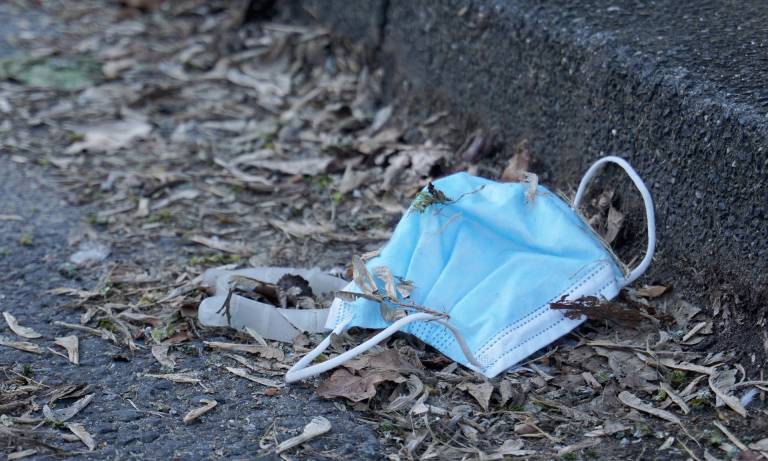Whilst the higher education model in Finland is still differs somewhat from the global trends, it is moving fast in the same direction. Hence, the fault lines exposed abroad yield valuable lessons for Finland and should, I argue, cause some alarm bells to ring.
The UK and Australian model
In the UK and Australia over the past thirty years, public universities have become increasingly commercialised and marketized. In an effort to make them more entrepreneurial, funding models have shifted towards forcing universities to compete for domestic student numbers, with each student paying considerable fees at levels set by government, which also lend money to the students to pay them.
Students equal income, and universities have competed hard with each other to admit more and more. In 2016, the UK government lifted all controls on the numbers of home students each university could recruit, setting off a recruitment free-for-all.
In this relentless pursuit of cash, UK and Australian universities have also pushed aggressively to expand their overseas student market, where there has never been any control of either fees or numbers. In Australia in 2019 some 30% of university places were taken by overseas students and 12% from China alone. The more prestigious universities do best in this competitive international market – with desirability signalled through the international rankings and heavy-duty professional marketing efforts. Many universities have opened overseas branch campuses, particularly in Southeast Asia and the Middle East. For instance, from the UK, the University of Reading has a branch campus in Malaysia and the University of Nottingham and large, established branch campus in Ningbo, China. From Australia, Monash University has a campus in Malaysia and RMIT in Vietnam. Dubai alone hosts 30 international branch campuses, many of them from British universities.
This dash for cash has indeed considerably expanded student numbers. To attract them and accommodate these students-as-customers, UK and Australian universities have hired extra staff and invested heavily in on-campus facilities such as student residences, sport and leisure facilities, new libraries/student centres etc. This capital work has typically been funded by borrowing, leading many universities to become heavily indebted on the (false) assumption that revenues from students would stay strong.
It is fair to say that generating cash has been a major leadership focus for these universities.
It is fair to say that generating cash has been a major leadership focus for these universities – I would argue, along with Rosemary Deem (2020) at the expense of the public service role of higher education institutions. The need to make the universities attractive via league tables etc also drives much management decision making.
In both countries this situation was appearing less and less sustainable by the start of 2020. Competition for students in the UK was so fierce that it had led to oversupply of places and there were fears that some universities would collapse through lack of sufficient income. The government was also mooting a reduction in the maximum home student fee. Brexit was starting to bite, with some very prestigious UK universities starting to slide down the international rankings.
In this fragile and contingent context, coronavirus is already having a catastrophic effect in Australia, where the academic year starts in the Northern hemisphere’s spring, and looks set fair to hit the UK similarly hard. The first and most obvious problem is that the overseas student market, on which the more elite universities in particular had become dependent, has largely evaporated as students choose not to enrol or are banned from travelling to their intended hosts. Around 4400,000 overseas students enrolled in Australian universities in 2019 – this year there are just 30 (ABC News, 2020). In the UK it is predicted that the academic year 2020-21 will see a £406 million drop in student fee income from Southeast Asia alone (Guardian, 2020).
A second, and related problem is that the severe nature of the COVID-19 crisis in the UK means that many social restrictions are likely to apply into 2021. This means that UK universities have had to institute measures for almost exclusive online learning from the start of the 2020-21 academic year. In Australia universities were closed right at the start of the academic year. In the UK and Australia marketing is often skewed towards offering the student-customers a ‘student experience’ which is as much about the social attractions of campus life as the study. In both countries students have called for fee refunds. It seems likely that many UK students will chose to defer entry into university until they can get the (expensive) comprehensive experience that they want. In the UK there have been controversies with some students going into their second and third years wanting to take a year out, especially in practical subjects such as the creative and performing arts – it is hard to study say drama on one’s own at home. Universities are seeking not to allow them to do this – because they are desperate for the fee income from the students. It feared that up to 20% of UK students could defer enrolment, generating an income loss of £760 million (Adams, 2020a).
This reduction in student demand has not resulted in the classic commercial response of dropping the price, despite student demands.
This reduction in student demand has not resulted in the classic commercial response of dropping the price, despite student demands. Rather, it has generated heightened competition between universities for the available students in a market already experiencing over-supply. More prestigious institutions are likely to come off best in this popularity contest, with others possibly collapsing altogether. In the UK, government has stepped in and announced that universities recruiting more than 5% of previous year’s numbers will be fined – but not until 2021-22. It has been argued that the government’s own scheme makes over-recruitment now and taking the hit when things have stabilised somewhat quite advantageous. In Australia and the UK universities now see themselves as facing a financial cliff edge, with heavy costs (including borrowing costs) and diminishing demand for their offer (Kernohan, 2020).
The response from universities to this looming crisis appears to have lacked agility and creativity. Staffing represents the single largest operating cost in universities and it is here that they are seeking to make the biggest savings. In both the UK and Australia most universities are seeking to reduce staffing levels – often hundreds of jobs at each institution. At first institutions terminated casual teaching contracts and allowed fixed-term employment contracts to expire without renewal. Now they are cutting permanent staff. For instance, Russell group University of Manchester has forecast it may lose up to £270 million in revenues in a single year as a result of coronavirus: ‘the university leadership is apparently considering deferring pay awards due to promotions, suspending annual increments and national pay awards, offering unpaid (part- or full-time) voluntary leave or retirement and implementing a pay cut for a defined period across the University’. ‘Job losses may also be required, a letter to staff stated (McKie, 2020a). Roehampton University in London predicted a £31 million loss as a result of the pandemic – 20% of total income (McKie, 2020b). This pattern is being repeated in many types and levels of university across the UK.
In Australia there are similar job-shedding moves. Hundreds of academic staff lost their jobs in the first few weeks as revenues from Southeast Asia plummeted – the numbers enrolling for the first time from China ‘fell from 46,480 in April 2019 to a mere 30 in April’ this year’ as a result of Australia’s strict rules on immigration due to the pandemic (Maslem, 2020). In all, some 21,000 research jobs are thought to be at risk (ABC News, 2020)
Neither the UK nor Australian governments appear to be prioritising rescue packages for universities, despite the severity of the looming crisis. A July 2020 report from the prestigious Institute for Fiscal Studies suggests that 13 UK public universities could become insolvent and close, and that many more would have their accumulated financial reserves wiped out, precluding future investment. The IFS claims that a highly targeted rescue package of just £140 million could reduce the number of universities at risk to just three, but Elaine Drayton, an author of the report, said ”However, rescuing failing institutions may weaken incentives for others to manage their finances prudently in future …General increases in research funding avoid this problem, but are unlikely to help the institutions that are most at risk, as few of them are research active.”
The lessons to be learned is that universities are part of vital public infrastructure and that funding models have to build in resilience. Years of encouraging massive expansion on the basis of exploitation of an overseas market and selling a ‘student experience’ to home students has left universities in the UK over-committed and vulnerable financially.
The future therefore looks uncertain for many institutions and the researchers within them. This loss of highly skilled human capacity will be difficult to recover from. The future is bleak. All of this is ironic at a time when scientists are at the forefront of vital public interest work. The lessons to be learned is that universities are part of vital public infrastructure and that funding models have to build in resilience. Years of encouraging massive expansion on the basis of exploitation of an overseas market and selling a ‘student experience’ to home students has left universities in the UK over-committed and vulnerable financially.
References
ABC News (2020) Research jobs set to go as coronavirus takes hold throughout Australian universities, accessed at https://www.abc.net.au/news/2020-05-11/australia-research-workforce-facing-widespread-coronavirus-pain/12234704, 17 June 2020.
Adams R (2020a) UK universities facing £760m hit as one in five students plan to defer, accessed at https://www.theguardian.com/education/2020/may/20/uk-universities-facing-760m-hit-one-in-five-students-plan-defer?CMP=Share_iOSApp_Other&fbclid=IwAR1loHh44hfHSZIlHuj77LXwGZDGucIJTclx07cHmG_nwrKNvpkSHRPbYAY on 17 June 2020.
Adams R (2020) Universities face £460m loss from expected drop in east Asian students, The Guardian, accessed at https://www.theguardian.com/education/2020/jun/08/universities-face-460m-loss-from-expected-drop-in-east-asian-students-coronavirus 18 June 2020.
Deem R (2020) Do higher education systems get the leadership they deserve? University purposes & leadership before and after the Corona virus, presentation to CHES, UCL, 17 June 2020.
Kernohan, D (2020) The shape of the Financial crisis to come?, Wonkhe, accessed at https://wonkhe.com/blogs/the-shape-of-things-to-come/, 19 June 2020.
Maslem G (2020) Hundreds of university jobs lost already due to pandemic, University World News, accessed at https://www.universityworldnews.com/post.php?story=20200526140135897, 17 June 2020.
McKie A(2020a), Coronavirus: Manchester staff ‘horrified’ by prospect of job cuts, Times Higher Education, accessed at https://www.timeshighereducation.com/news/coronavirus-manchester-staff-horrified-prospect-job-cuts, 17 June 2020.
McKie A(2020b), Roehampton is ‘first UK university to announce crisis job severances’, Times Higher Education, accessed at https://www.timeshighereducation.com/news/roehampton-first-uk-university-announce-crisis-job-severances 17 June 2020.






